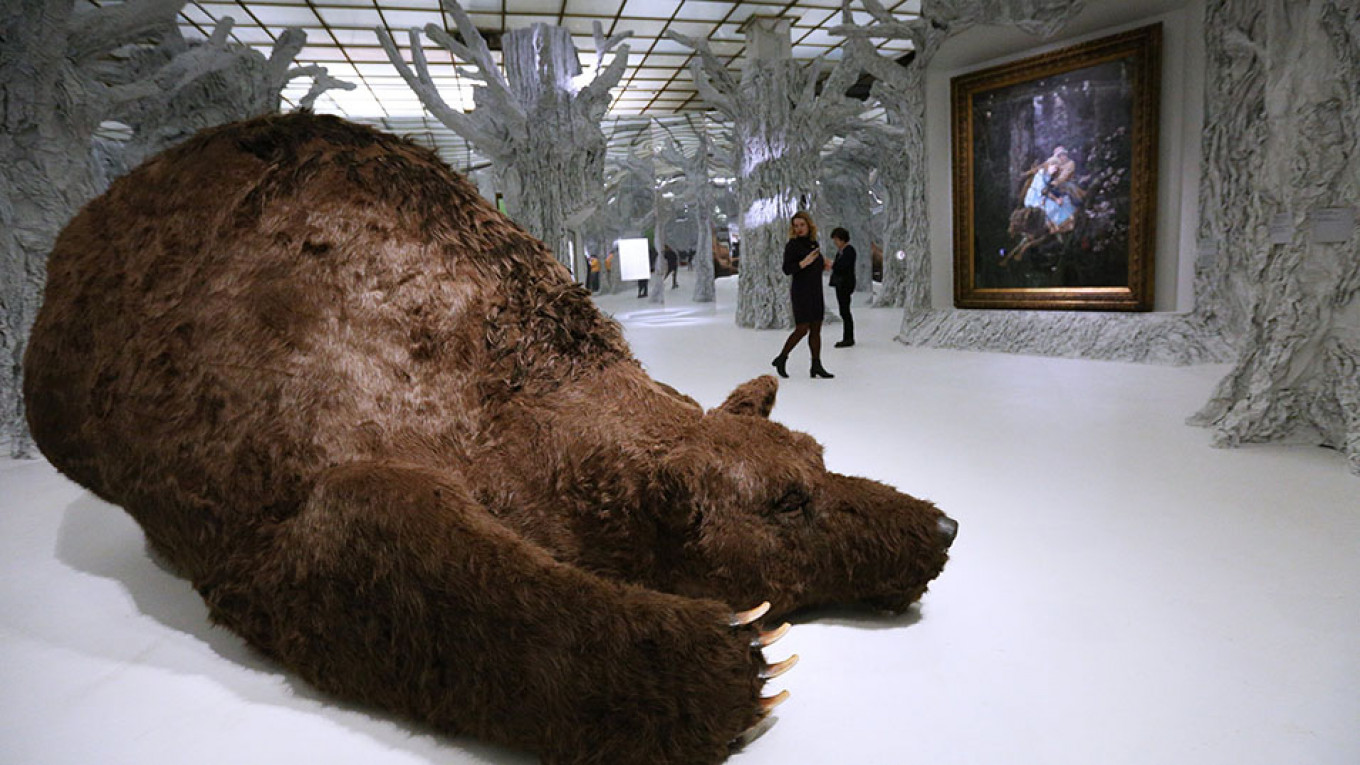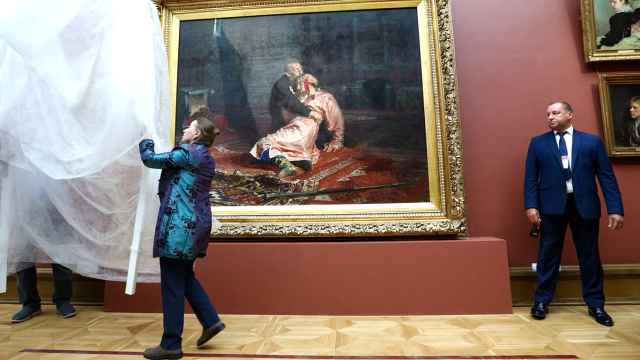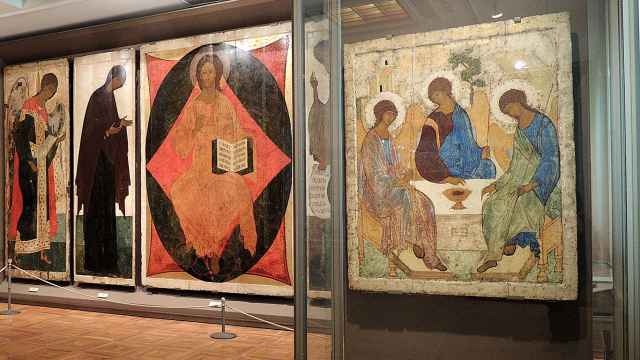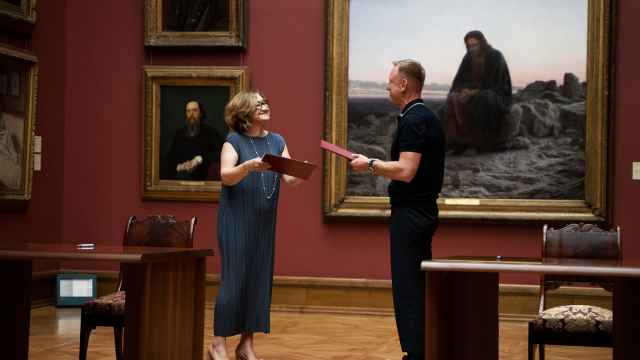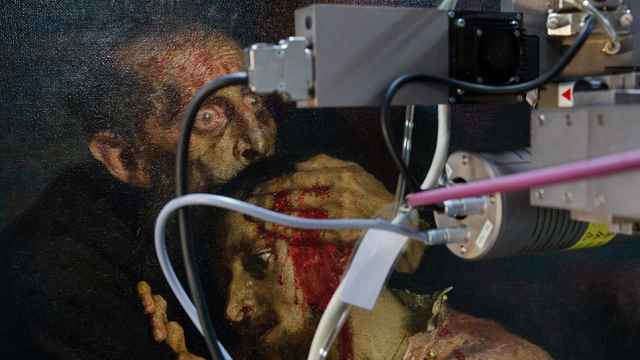This weekend marked the opening of the Tretyakov Gallery’s latest exhibit, “The Russian Fairy Tale: From Vasnetsov to the Present,” which promises to be a crowd-pleaser. In mediums ranging from oil painting to film to taxidermy, this mixed-media collection highlights the role of fantasy in the Russian imagination, and demonstrates the various ways in which the classic narratives of Russian folklore can be reimagined and reinterpreted by contemporary minds.
Upon entering the exhibition hall, visitors are greeted by a reposing plush bear of considerable size, whose placard indicates that he may be hugged but not disturbed to the point of awakening. This sets the tone for the works to come, which walk the line between the absurd and heartwarming, the frightening and majestic. Despite its lighthearted theme, the exhibit is far from an exclusive “kid zone.” As organizer Alexei Tregubov stated at the opening ceremony, “This exhibit is not only for children, but for the child in every adult.”
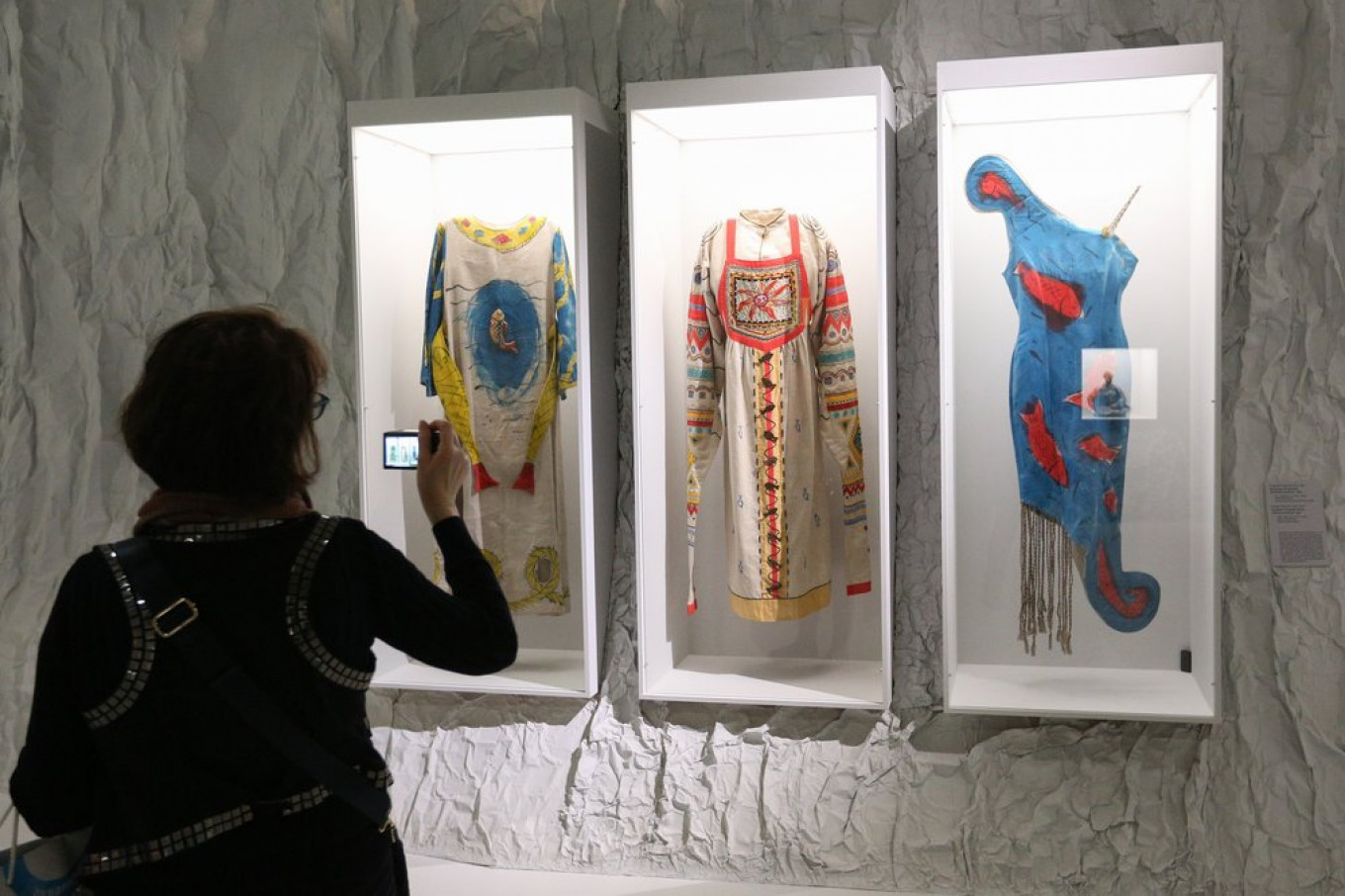
Visitors will recognize the well-known characters of Russian folklore - the benevolent Father Frost and Snegurochka, the antagonistic Baba Yaga and Koschei - but will see them transformed across mediums by artists working in different times and places. Ivan Bilibin’s instantly-recognizable watercolors hang beside flashing video installations, and a reference to “Game of Thrones” can be spotted amongst the snow maidens and firebirds.
The exhibit hall itself, which has been completely transformed into an immersive fantasy forest, takes on a surreal feeling. The viewer is no longer a passive observer, but an interactive member of a live narrative in which anything, one begins to think, is possible.
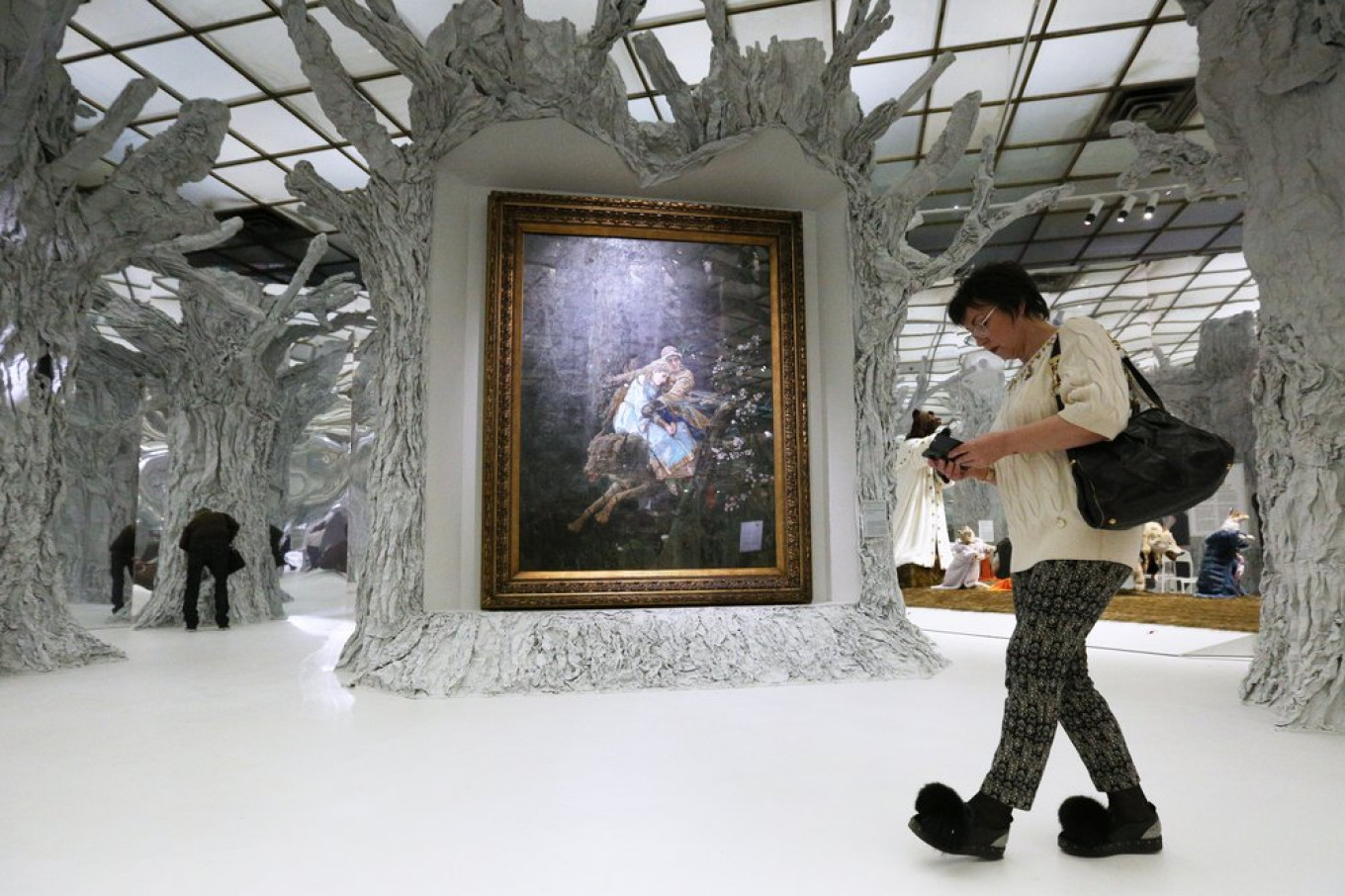
The tagline “From Vasnetsov to the Present” signifies the historical parameters of the exhibit, whose collection is comprised solely of works created from the 19th century onwards. In this way, the exhibit acts not just as an assemblage of pieces, but as a microcosm of Russian folklore in a century of extreme ideological upheaval. The tsarevna of Imperial Russia may bear only a passing resemblance to her Soviet counterpart, and from one decade to the next the narrative of a villain may take on a certain political tone. And so, walking through imaginary worlds, the viewer begins to see fairytales as reflections of national identity, the compasses which we ourselves aim at a chosen North.
The exhibit will run at the New Tretyakov Gallery until May 10, 2020.
New Tretyakov Gallery, 10 Ulitsa Krymsky Val. Metro Octyabrskaya, Park Kultury. Tretyakovgallery.ru
A Message from The Moscow Times:
Dear readers,
We are facing unprecedented challenges. Russia's Prosecutor General's Office has designated The Moscow Times as an "undesirable" organization, criminalizing our work and putting our staff at risk of prosecution. This follows our earlier unjust labeling as a "foreign agent."
These actions are direct attempts to silence independent journalism in Russia. The authorities claim our work "discredits the decisions of the Russian leadership." We see things differently: we strive to provide accurate, unbiased reporting on Russia.
We, the journalists of The Moscow Times, refuse to be silenced. But to continue our work, we need your help.
Your support, no matter how small, makes a world of difference. If you can, please support us monthly starting from just $2. It's quick to set up, and every contribution makes a significant impact.
By supporting The Moscow Times, you're defending open, independent journalism in the face of repression. Thank you for standing with us.
Remind me later.



